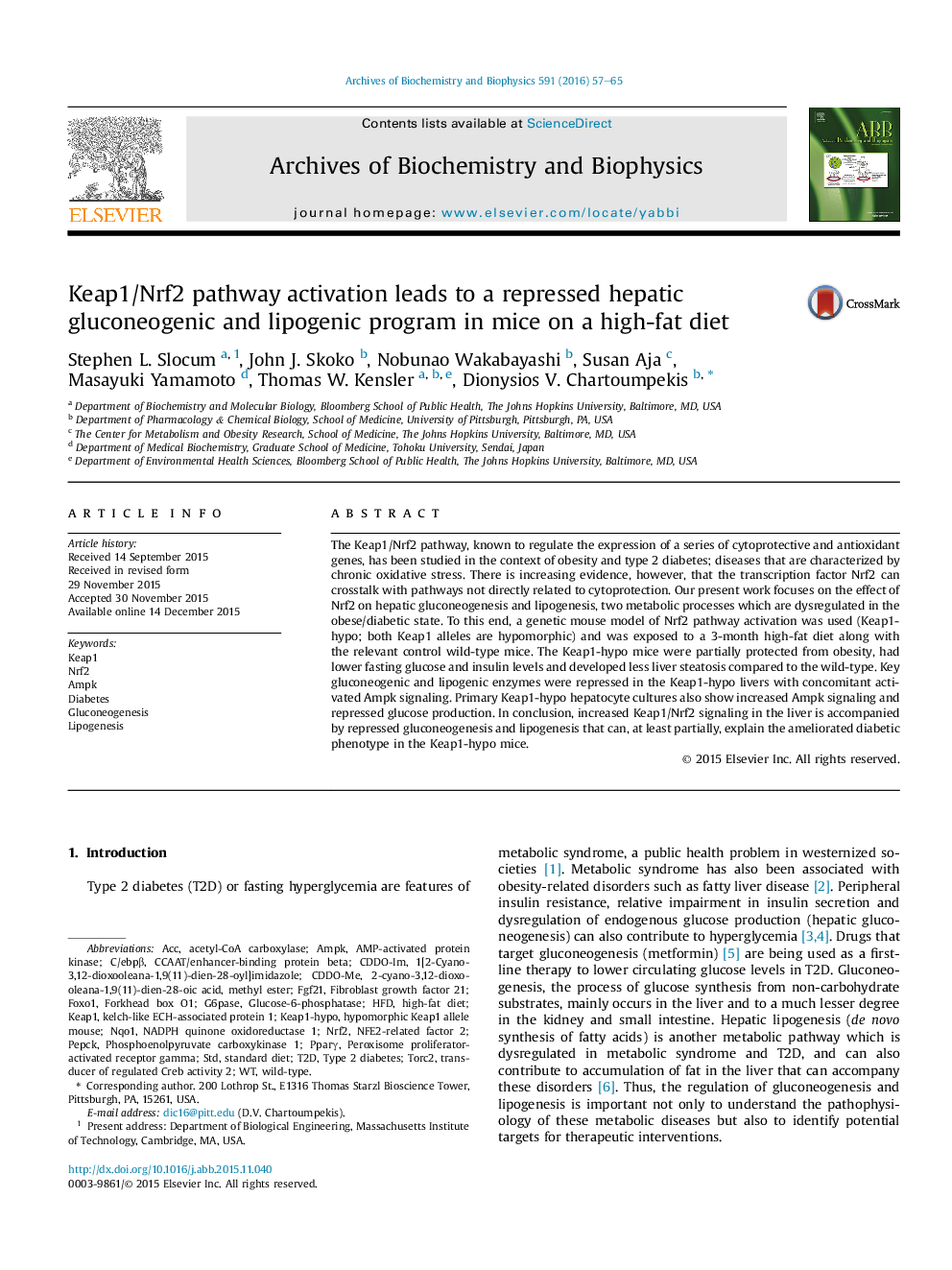| Article ID | Journal | Published Year | Pages | File Type |
|---|---|---|---|---|
| 1924810 | Archives of Biochemistry and Biophysics | 2016 | 9 Pages |
•Genetic activation of the Nrf2 pathway leads to ameliorated glucose tolerance in mice on high-fat diet.•Less liver steatosis after high-fat diet is observed in mice with enhanced Nrf2 signaling.•Activated Ampk pathway and repressed hepatic gluconeogenesis and lipogenesis in mice with enhanced Nrf2 signaling.
The Keap1/Nrf2 pathway, known to regulate the expression of a series of cytoprotective and antioxidant genes, has been studied in the context of obesity and type 2 diabetes; diseases that are characterized by chronic oxidative stress. There is increasing evidence, however, that the transcription factor Nrf2 can crosstalk with pathways not directly related to cytoprotection. Our present work focuses on the effect of Nrf2 on hepatic gluconeogenesis and lipogenesis, two metabolic processes which are dysregulated in the obese/diabetic state. To this end, a genetic mouse model of Nrf2 pathway activation was used (Keap1-hypo; both Keap1 alleles are hypomorphic) and was exposed to a 3-month high-fat diet along with the relevant control wild-type mice. The Keap1-hypo mice were partially protected from obesity, had lower fasting glucose and insulin levels and developed less liver steatosis compared to the wild-type. Key gluconeogenic and lipogenic enzymes were repressed in the Keap1-hypo livers with concomitant activated Ampk signaling. Primary Keap1-hypo hepatocyte cultures also show increased Ampk signaling and repressed glucose production. In conclusion, increased Keap1/Nrf2 signaling in the liver is accompanied by repressed gluconeogenesis and lipogenesis that can, at least partially, explain the ameliorated diabetic phenotype in the Keap1-hypo mice.
Graphical abstractFigure optionsDownload full-size imageDownload high-quality image (91 K)Download as PowerPoint slide
